10 most feared predators that lived on our planet. Next to them, the lion seems kitten ...
 Bashny.Net
Bashny.Net
Walking next to the zoo with cages of tigers and lions, you feel small and helpless against the backdrop of these predators. What can I say, sometimes even a small spider can cause panic, forcing fear. And watching the film "Jaws" you begin to wonder whether to go for a vacation by the sea? However, present-day animals are not so terrible compared to their prehistoric ancestors. Edition Ofigenno.cc offers you to get acquainted with 10 extinct predators against which modern lions seem fluffy kittens.
merostomes (eurypterids)
These giant arthropods were like a horrible hybrid of lobster and scorpion. The length of this "charm" could reach 2 meters. Merostomes existed during the Paleozoic. Early types eurypterids lived in the shallow waters of the sea, and then managed to adapt to fresh water. Scientists suggest that merostomes likely were scavengers, not predators, high-grade, but this fact is not particularly reassuring. If these little creatures managed to survive until this day, it is unlikely to rest on the sea and fishing have been so popular.

helicoprion
The ancestor of modern sharks lived in the Carboniferous and Permian age. These fish are unique in dental spiral, which reached 90 centimeters in diameter. Since the whole skeleton helicoprion has not been found, scientists are still wondering how this spiral was located. It is believed that it was equipped with the lower jaw of fish that had the shape of a circular saw. Alternatively, a spiral is located in the throat and was invisible from the outside. In any case helicoprion look intimidating, and against the background pale even the most terrible pictures of the underwater world.
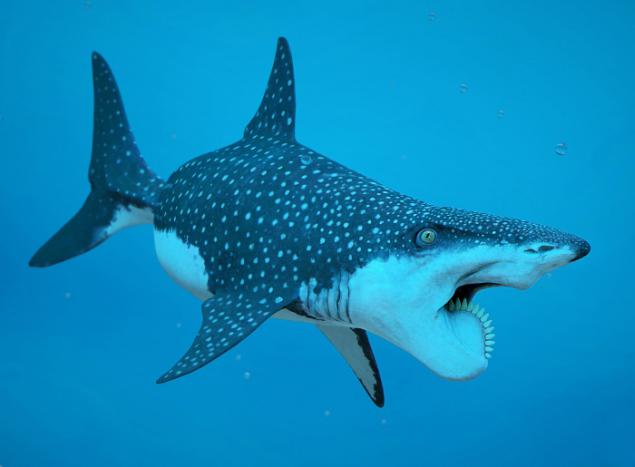
dunkleosteus
This fossil fish Brigandine lived in the Devonian period, and was the largest marine predators of its time. The size of her head higher than a meter, the length of the entire body of scientific estimates ranged from 6 to 20 meters. Instead of teeth dunkleosteya were bony plates that he could crush the shells of their prey. Maxillo pressure dunkleosteya bite comparable to present-day crocodiles. Also, he could open the jaws in just 1/50 of a second, just sucking in prey into the mouth water flow.
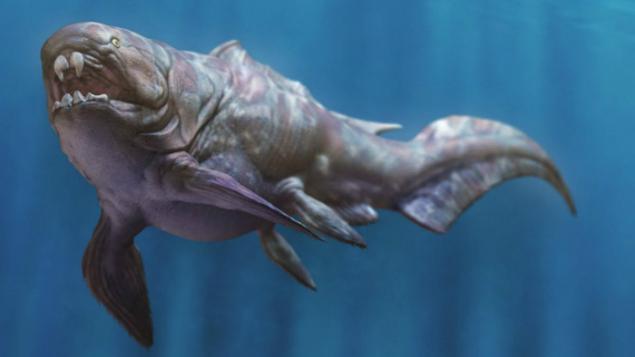
Quetzalcoatl
The largest of the pterosaurs got its name in honor of the eponymous deity of the Aztecs. As a complete set of bones Quetzalcoatl has not yet been found, the estimation of its size and way of life are different. The length of the lizard was about 10 meters, the estimated wingspan ranges from 11 to 16 meters and weight of 65 to 250 kg. According to the earlier versions, Quetzalcoatl was able to perfectly fly and feed on fish and small vertebrates and carrion. Maybe he could catch and 30-pound dinosaur. But now inclined to believe that with such dimensions Quetzalcoatl could not get up in the air and collect food, moving on the ground.
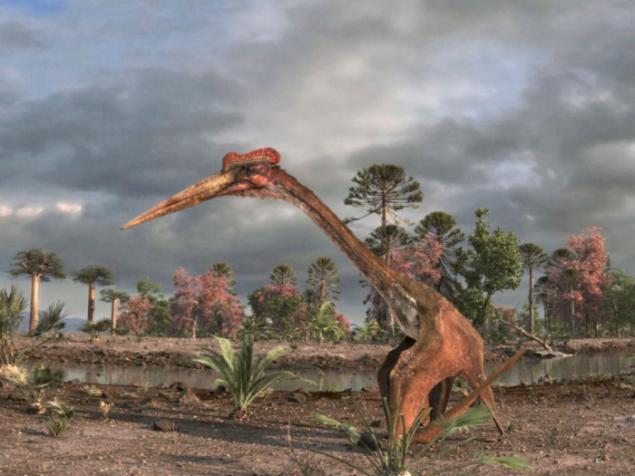
Argentavis
Argentavis magnificens means "majestic Argentine bird." It is the largest ever existed birds. Dimensions Argentavis comparable with small aircraft. Its wingspan reaches 7 meters, which is twice more than that of the largest present-day birds. Scientists suggest that Argentavis hunted large rodents, crashing on top of them, stunning and swallowing prey whole.

phorusrhacos (awful bird)
These birds live in the era of the Miocene in South America and considered it the largest predators. Phorusrhacos did not know how to fly, but perfectly able to run around like a present ostrich. Terrible birds reach up to 2, 5 meters tall and weighed about 300 kilograms. Were armed with large claws and powerful curved beak, which they could kill and devour prey the size of a sheep!
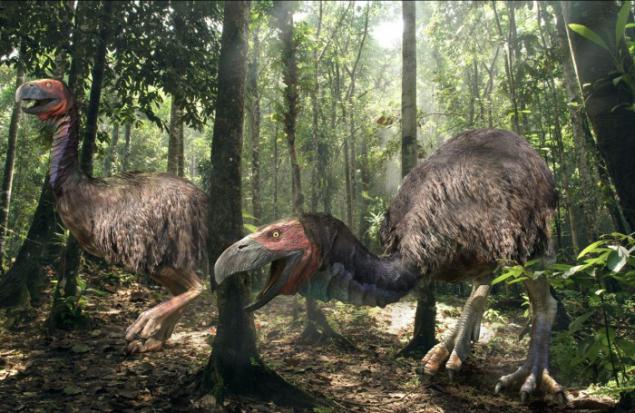
andrewsarchus
This giant carnivorous mammals lived in the era of the middle and late Eocene. Now it may seem strange, but andrewsarchus were primitive hoofed animals close to the ancestors of modern whales and artiodactyls. The body length of these creatures was about 4 meters, and the weight can reach a ton. It is believed that andrewsarchus could be omnivores, as the present bears, and fed not only by young brontotheres but also carrion or plant food. Nevertheless, many scientists believe andrewsarchus largest predatory mammals.
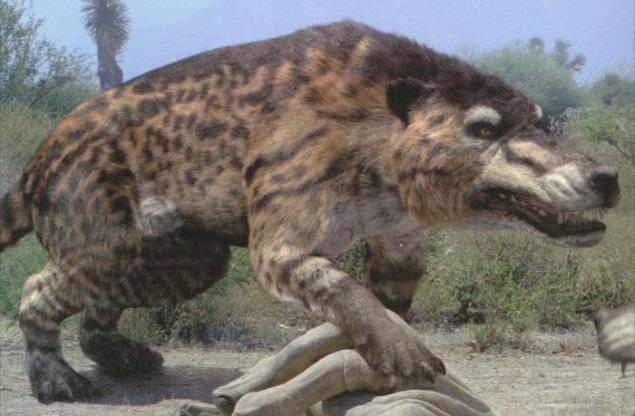
megistotherium
Another contender for the title of the largest carnivorous mammal. Megistotherium lived in the early and middle Miocene. These animals can reach 4 meters long and 2 meters at the shoulder and weigh more than a ton. The Latin name for the animal Megistotherium osteothlastes comes from the Greek words "great beast" and "crushing the bones." These names speak for themselves.
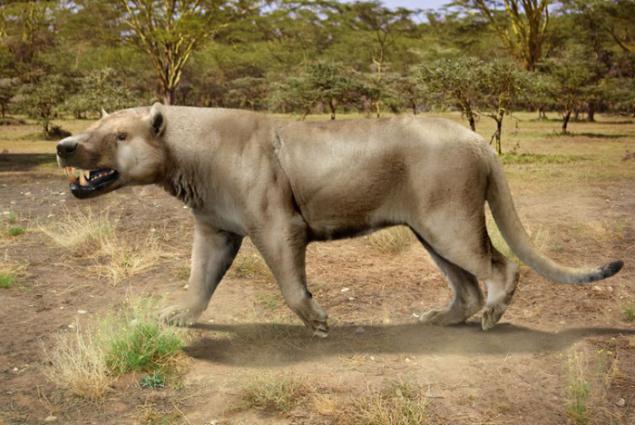
thylacosmilus (tilakosmil)
Tilakosmil lived during the Miocene in South America. Its main feature was a huge ever-growing upper canines, as well as protecting the blades on the upper jaw. Sizes sumchasty toothed tiger was similar to the present, and jaguars preyed on large herbivores.
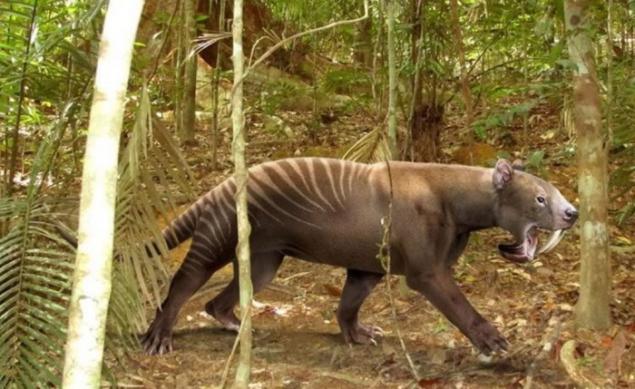
The giant short-faced bear
The largest ever existed bears. He lived in an era of icing and was considered one of the largest carnivores of the time. The length of the body of the bear was about 3 to 5 meters, and the weight can exceed a ton. Unlike modern bears, he had jaws that were more adapted for eating flesh. It is believed that the giant short-faced bear was a full predator and preyed on horses, deer, bison and camels.
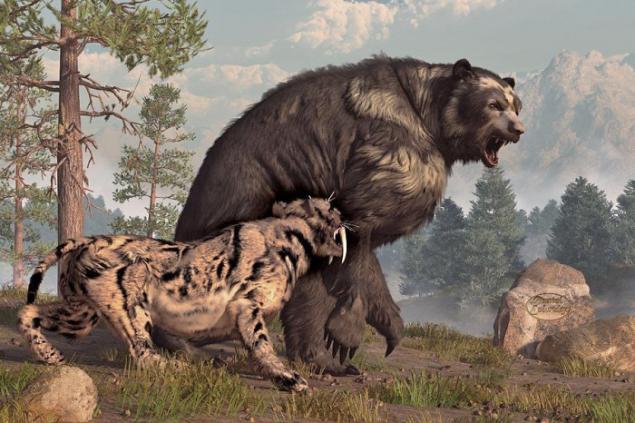
Now you see that the man was lucky to live in a relatively safe time and walking in the woods, you can not be afraid of anyone. Do not forget to share this record with your friends. After all, these monsters will see not every horror movie.
via ofigenno ru
merostomes (eurypterids)
These giant arthropods were like a horrible hybrid of lobster and scorpion. The length of this "charm" could reach 2 meters. Merostomes existed during the Paleozoic. Early types eurypterids lived in the shallow waters of the sea, and then managed to adapt to fresh water. Scientists suggest that merostomes likely were scavengers, not predators, high-grade, but this fact is not particularly reassuring. If these little creatures managed to survive until this day, it is unlikely to rest on the sea and fishing have been so popular.

helicoprion
The ancestor of modern sharks lived in the Carboniferous and Permian age. These fish are unique in dental spiral, which reached 90 centimeters in diameter. Since the whole skeleton helicoprion has not been found, scientists are still wondering how this spiral was located. It is believed that it was equipped with the lower jaw of fish that had the shape of a circular saw. Alternatively, a spiral is located in the throat and was invisible from the outside. In any case helicoprion look intimidating, and against the background pale even the most terrible pictures of the underwater world.

dunkleosteus
This fossil fish Brigandine lived in the Devonian period, and was the largest marine predators of its time. The size of her head higher than a meter, the length of the entire body of scientific estimates ranged from 6 to 20 meters. Instead of teeth dunkleosteya were bony plates that he could crush the shells of their prey. Maxillo pressure dunkleosteya bite comparable to present-day crocodiles. Also, he could open the jaws in just 1/50 of a second, just sucking in prey into the mouth water flow.

Quetzalcoatl
The largest of the pterosaurs got its name in honor of the eponymous deity of the Aztecs. As a complete set of bones Quetzalcoatl has not yet been found, the estimation of its size and way of life are different. The length of the lizard was about 10 meters, the estimated wingspan ranges from 11 to 16 meters and weight of 65 to 250 kg. According to the earlier versions, Quetzalcoatl was able to perfectly fly and feed on fish and small vertebrates and carrion. Maybe he could catch and 30-pound dinosaur. But now inclined to believe that with such dimensions Quetzalcoatl could not get up in the air and collect food, moving on the ground.

Argentavis
Argentavis magnificens means "majestic Argentine bird." It is the largest ever existed birds. Dimensions Argentavis comparable with small aircraft. Its wingspan reaches 7 meters, which is twice more than that of the largest present-day birds. Scientists suggest that Argentavis hunted large rodents, crashing on top of them, stunning and swallowing prey whole.

phorusrhacos (awful bird)
These birds live in the era of the Miocene in South America and considered it the largest predators. Phorusrhacos did not know how to fly, but perfectly able to run around like a present ostrich. Terrible birds reach up to 2, 5 meters tall and weighed about 300 kilograms. Were armed with large claws and powerful curved beak, which they could kill and devour prey the size of a sheep!

andrewsarchus
This giant carnivorous mammals lived in the era of the middle and late Eocene. Now it may seem strange, but andrewsarchus were primitive hoofed animals close to the ancestors of modern whales and artiodactyls. The body length of these creatures was about 4 meters, and the weight can reach a ton. It is believed that andrewsarchus could be omnivores, as the present bears, and fed not only by young brontotheres but also carrion or plant food. Nevertheless, many scientists believe andrewsarchus largest predatory mammals.

megistotherium
Another contender for the title of the largest carnivorous mammal. Megistotherium lived in the early and middle Miocene. These animals can reach 4 meters long and 2 meters at the shoulder and weigh more than a ton. The Latin name for the animal Megistotherium osteothlastes comes from the Greek words "great beast" and "crushing the bones." These names speak for themselves.

thylacosmilus (tilakosmil)
Tilakosmil lived during the Miocene in South America. Its main feature was a huge ever-growing upper canines, as well as protecting the blades on the upper jaw. Sizes sumchasty toothed tiger was similar to the present, and jaguars preyed on large herbivores.

The giant short-faced bear
The largest ever existed bears. He lived in an era of icing and was considered one of the largest carnivores of the time. The length of the body of the bear was about 3 to 5 meters, and the weight can exceed a ton. Unlike modern bears, he had jaws that were more adapted for eating flesh. It is believed that the giant short-faced bear was a full predator and preyed on horses, deer, bison and camels.

Now you see that the man was lucky to live in a relatively safe time and walking in the woods, you can not be afraid of anyone. Do not forget to share this record with your friends. After all, these monsters will see not every horror movie.
via ofigenno ru
Tags
See also
They're smarter than I thought! 10 smartest animals on our planet.
The worst place on earth: where to go on Halloween
The scariest picture in the world
Most feared assassin in the world
Incredibly beautiful corners of our planet
Medea hypothesis says life is actually making our planet uninhabitable
"Medea Hypothesis": how life on our planet, making it uninhabitable
The worst places on the planet
The worst sea creatures
15 most read and iconic works of science fiction in the Western Hemisphere of our planet.
















